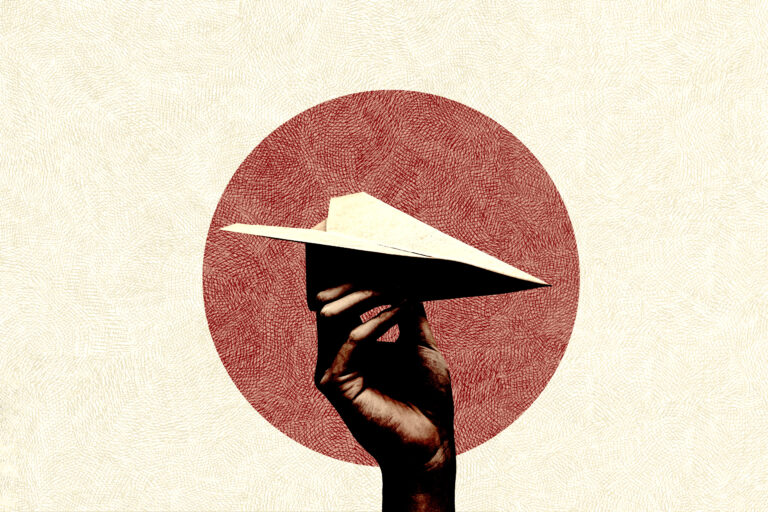What is Good Friday, and why do Christians celebrate it? Good Friday is the Friday before Easter Sunday. It is commemorated as the day on which Jesus Christ was crucified. For many Christians, it is a special day of fasting and repentance.
Let’s explore Good Friday and what makes a day of execution something we can call “good.”
The Hours Leading Up to Good Friday
Jesus Christ was crucified just outside Jerusalem’s city limits on the Friday of the Jewish Passover feast in April of either A.D. 30 or 33.[1] Here is an account of the events in the hours leading up to and including his crucifixion.
On Thursday night Jesus and his disciples observed the Passover meal in Jerusalem. They then traveled outside the city to the Mount of Olives. There, in a garden known as Gethsemane, Jesus prayed to God the Father three times, hoping and pleading that God would provide another way for him to save us from our sins. After this series of earnest petitions and intense agony, it became apparent that there was no other way.
“After this series of earnest petitions and intense agony, it became apparent that there was no other way.”
Jesus thus determined to give himself up and undergo death upon the cross (Matt. 26:36–46).
The Jewish leaders wanted this teacher to be taken out of the way. They believed that Jesus would cause such an upheaval that the occupying Roman army would seize the opportunity to destroy their nation. So, they bribed one of Jesus’ disciples named Judas to betray him. Judas betrayed Jesus by bringing the temple officials to the Garden of Gethsemane just after midnight, where they arrested him (Mark 14:43).
Jesus then went through a series of six trials, of various sorts, which extended through that night and well into the next morning.[2] These trials were both unfair and viciously rigged. Between the trials, Jesus was blindfolded, spat upon, struck in the face, beaten, mocked, ridiculed, and flogged. The effects of these attacks took a tremendous physical toll on him. Finally, after about eight hours of abuse and false trials, the Roman procurator, Pontius Pilate, sent Jesus to be crucified.
The Official Reason for Good Friday
According to the Jewish religious leaders, Jesus’ crime was blasphemy, because he claimed to be the Son of God (Matt. 26:63). According to the Romans, however, his crime was insurrection, because he claimed to be the king of the Jews (Mark 15:5). The evil intent and plans of human beings, however, were used by God to fulfill his own purposes of reconciling the world to himself through Christ (Acts 2:22–36).
Good Friday: What was Jesus’ physical condition prior to crucifixion?
Not too long ago, the well-known medical publication Journal of the American Medical Association published a scholarly account of the death of Jesus titled “On the Physical Death of Jesus Christ.” In this journal, the authors had some interesting things to say about Jesus’ treatment during these trials. The Romans were experts at preparing their criminals for death. They had the preparation down to a science. The principal means used was flogging:[3]
Flogging was a legal preliminary to every Roman execution, and only women and Roman senators or soldiers (except in the case of desertion) were exempt.…For scourging, the man was stripped of his clothing, and his hands were tied to an upright post. The back, buttocks, and legs were flogged either by two soldiers (lictors) or by one who alternated positions. The severity of the scourging depended on the disposition of the lictors and was intended to weaken the victim to a state just short of collapse or death.…As the Roman soldiers repeatedly struck the victim’s back with full force, the iron balls [at the end of the whips] would cause deep contusions, and the leather thongs and sheep bones would cut into the skin and subcutaneous tissues. Then, as the flogging continued, the lacerations would tear into the underlying skeletal muscles and produce quivering ribbons of bleeding flesh.
“As the flogging continued, the lacerations would tear into the underlying skeletal muscles and produce quivering ribbons of bleeding flesh.”
Scripture teaches that Jesus was the epitome of humility (Phil. 2:3ff). It teaches that not only did God send his Son to the earth to live in the flesh, but he was born in a manger. He grew up in the humble home of a carpenter. He was rejected by the teachers and leaders of the time; and then, after being betrayed by one friend, denied by another, and abandoned by the rest, he underwent a series of beatings and trials which ignored true justice.
Lastly, he was subjected to cruel punishment and death for crimes he did not commit.
Edwards and the other medical examiners comment further:
At the Praetorium, Jesus was severely whipped (Although the severity of the scourging is not discussed in the four gospel accounts, it is implied in one of the epistles [1 Peter 2: 24]) … The Roman soldiers, amused that this weakened man had claimed to be king, began to mock him by placing a robe on his shoulders, a crown of thorns on his head, and a wooden staff as a sceptre in his right hand. Next, they spat on Jesus and struck him on the head with the wooden staff … The physical and mental abuse meted out by the Jews and the Romans, as well as the lack of food, water, and sleep, also contributed to his generally weakened state. Therefore, even before the actual crucifixion, Jesus’ physical condition was at least serious and possibly critical.[4]
Finally, the soldiers led Jesus out to be crucified.
Good Friday: What was crucifixion like?
By this time Jesus was so weakened by the severe flogging he was unable to carry his cross, so they compelled a man named Simon of Cyrene to carry it for him. Simon carried it outside the city to a stone quarry where Jesus was crucified (Mark 15:21).
Although the Romans did not invent crucifixion, they perfected it as a form of torture and capital punishment that was designed to produce slow death with maximum pain and suffering. It was one of the most disgraceful and cruel methods of execution and usually was reserved only for slaves, foreigners, revolutionaries, and the vilest of criminals. Roman law usually protected Roman citizens from crucifixion, except perhaps in the case of desertion by soldiers.[5]
Jesus was secured to the cross by heavy iron nails driven into his wrists/hands and feet. The nails were 5 to 7 inches long (13 to 18 cm) with a square shaft 3/8 of an inch (1 cm) across. Death by crucifixion could take from four hours to four days. The person being punished would experience great agony. Excruciating bolts of fiery pain in both arms and legs, tremendous difficulty breathing, lacerated and bleeding flesh, all made for a horrible death.
Good Friday: How long did the crucifixion last?
Jesus was placed on the cross to die at roughly 9:00 a.m. (Mark 15:25).
The Gospel of Mark describes what happened when Jesus was on the cross with these words:
The written notice of the charge against him read: the king of the jews. They crucified two rebels with him, one on his right and one on his left. Those who passed by hurled insults at him, shaking their heads and saying, “So! You who are going to destroy the temple and build it in three days, come down from the cross and save yourself!” In the same way the chief priests and the teachers of the law mocked him among themselves. “He saved others,” they said, “but he can’t save himself! Let this Messiah, this king of Israel, come down now from the cross, that we may see and believe.” Those crucified with him also heaped insults on him. At noon, darkness came over the whole land until three in the afternoon. And at three in the afternoon Jesus cried out in a loud voice, “Eloi, Eloi, lema sabachthani?” (which means “My God, my God, why have you forsaken me?”). When some of those standing near heard this, they said, “Listen, he’s calling Elijah.” Someone ran, filled a sponge with wine vinegar, put it on a staff, and offered it to Jesus to drink. “Now leave him alone. Let’s see if Elijah comes to take him down,” he said. With a loud cry, Jesus breathed his last. (Mark 15:26-37, NIV)
“With a loud cry, Jesus breathed his last.”
Before he died, Jesus said a prayer to his Father so that he would “forgive them, for they do not know what they are doing” (Luke 23:34). He also promised a repentant thief crucified next to him, “Today you will be with me in paradise” (Luke 23:43), as well as entrusting care of his mother to his disciple John who watched the crucifixion with her (John 19:26-27).
Jesus died at roughly 3:00 p.m. (Matt. 27:45).
Good Friday: What happened after he died?
His death was accompanied by an earthquake, during which the temple veil, separating the “Holy of Holies” from the rest of the temple, tore from top to bottom (Mark 15:38).
After his death, to make sure that he was dead, the soldiers pierced his side with a spear.
According to the Journal of the American Medical Association, there’s not a consensus as to whether Jesus finally died of a heart attack (cardiac rupture) or by suffocation (cardio-respiratory failure).[6]
After death, his body was taken and placed in the tomb of a man named Joseph of Arimathea, a rich member of the Jewish Sanhedrin (Mark 16:43).
“His body was taken and placed in the tomb of a man named Joseph of Arimathea.”
But by early Sunday morning something wonderful had happened: The Gospel of Matthew records the event of Easter Sunday this way:
After the Sabbath, at dawn on the first day of the week, Mary Magdalene and the other Mary went to look at the tomb. There was a violent earthquake, for an angel of the Lord came down from heaven and, going to the tomb, rolled back the stone and sat on it. His appearance was like lightning, and his clothes were white as snow. The guards were so afraid of him that they shook and became like dead men. The angel said to the women, “Do not be afraid, for I know that you are looking for Jesus, who was crucified. He is not here; he has risen, just as he said. (Matt. 28:1-6, NIV)
For more about the resurrection of Jesus, see Why Do We Celebrate Easter?
The Real Reason for Good Friday: The Problem of Sin
From the beginning of time, the fundamental rift between God and his people has been sin. Sin can be defined as everything in daily life which is set against or fails to conform with the character of God. This is usually demonstrated in an attitude of rebellion or disobedience. Although there are at least eight words that are used to describe sin in the Old Testament and as many as twelve in the New Testament, the foundational idea is that of lack of conformity to God’s will.
Put simply, sin is the failure to do what God would have us do.
As Isaiah said, “Your iniquities have separated you from your God; your sins have hidden his face from you so that he will not hear” (Is. 59:2).
“Your iniquities have separated you from your God.”
God’s reaction to sin—warning us against it, punishing us for it—is hard for many people to understand. We fail to understand because we do not appreciate God’s holiness. To say that God is holy is to say that God is absolutely pure and separate from sin. Sin cannot stand in the presence of holiness.
A holy God must insist on holiness in others, lest his own dignity and honor be diminished. God’s holiness requires that sin be punished and that divine judgment fall upon sinners (Ex. 34:7; Rom. 1:18, 32). If God left sin and sinners alone without attempting to get them to turn from their wickedness, then he would fail to be a holy and just God.
The Historical Backdrop of Good Friday
Sin, therefore, is a serious matter to God. Sin destroys humanity’s relationship with God. Ever since Adam and Eve sinned, God has been faced with a dilemma: he wants to be in relationship with his people, but that relationship is impossible because of sin. In his love, God decided to send his Son into the world to remove human sin, so that God and his people could be one. God’s holiness made a penalty for sin necessary.
God’s love endured that penalty in Jesus and made freedom from sin possible.[7]
God prepared the Israelite people well in advance so they could understand how God’s holiness required the sacrifice of Christ if people were to be forgiven. In the Israelite covenant (the Old Testament), God sought to help his people to appreciate his holiness and the damage sin causes, by the institution of a special tabernacle and a special priesthood.[8]
What is Good Friday? “God sought to help his people to appreciate his holiness and the damage sin causes.”
To represent God’s holiness, the priests had to meet specific qualifications, wear special clothes, and carefully follow ceremonial procedures. Their job was to help the people understand sin and to offer sacrifices for it. God described in detail the extent and exact nature of sin (Lev. 8–16, etc.), and then he provided a sacrificial system to enable the people to atone for sin.
To make atonement between a sinner and God, there had to be the loss of an animal’s life and the shedding of blood (Lev. 17:11). Consequently, numerous animal sacrifices were prescribed so that, after committing a particular sin, a person could kill an animal and have the animal’s blood sprinkled before God in a ceremonial fashion. By this “sacrifice of atonement,” sins were cleansed.
The most important part of this sacrificial system was the Day of Atonement.
The activities of this day were to be performed only once a year, and in the strictest fashion (Lev. 16:2, 29, 30). This was a lasting ordinance to atone for all the sins of the Israelites (16:34). The high point of the day was when the high priest entered the Most Holy Place (the innermost part of the tabernacle).
What is Good Friday? “The high point of the day was when the high priest entered the Most Holy Place.”
The Most Holy Place represented the dwelling place of God, standing for holiness and purity. After making numerous sacrifices for himself, the high priest would enter into the Most Holy Place and sprinkle blood on and in front of the atonement cover (16:15).
The atonement cover represented the specific dwelling place of God. God taught them that the only way sin could be removed was through the shedding of blood:
For the life of a creature is in the blood, and I have given it to you to make atonement for yourselves on the altar; it is the blood that makes atonement for one’s life. (Lev. 17:11)
So, in this fashion, the Israelites became aware of God’s holiness and the extent and nature of sin, as well as the fact that it was necessary that there be a blood sacrifice and the loss of life if there was to be atonement for sin.
The Old Testament (Jewish) sacrificial system was set up, in part, as an educational foreshadow or prefigure of what God would do in the sacrifice of Jesus Christ on the cross.
What Makes Good Friday Good
By God’s preordained plan, Jesus went to the cross as a willing sacrificial victim. The sins of humankind were such that God could only be reconciled (or “at one”) with people if their sins were removed.
Only the blood and life of God’s Son could take away the sins of the whole world. The Old Testament sacrifices of goats and calves were miniscule imitations of the final and complete sacrifice of Jesus Christ.
So Christ has now become the High Priest over all the good things that have come. He has entered that greater, more perfect Tabernacle in heaven, which was not made by human hands and is not part of this created world. With his own blood—not the blood of goats and calves—he entered the Most Holy Place once for all time and secured our redemption forever. (Heb. 9: 11-12, NLT)
What is Good Friday? “He took his own blood, and with it he secured our salvation forever.”
Only the sacrifice of Jesus’ blood (Heb. 9: 24-28) could meet the demands of God’s holiness and justice.
Sin could only be removed forever by his sacrificial death. In this way, Good Friday solved the dilemma of how God could definitively punish our sins and yet show us mercy and reenter relationship with us.
That is what happened on Good Friday.
That is why Jesus had to die.
That is why we call Good Friday good.
And that is also why Jesus’ resurrection on Sunday is so important. Although he died on Friday, on Sunday he was raised to new life. The penalty for the sins of humanity had been paid. Now, new life is now available for all.
Good Friday in a Word: “Atonement”
A term often used to describe the result of the death, burial, and resurrection of Jesus is “atonement.” The word atonement is an old English word which means “to be set at one, to reconcile.”[9] Etymologically this word is made up of three words: “at,” “one,” and “ment” (at-one-ment).
The term “atonement,” then, is an English word used to explain how the death, burial, and resurrection of Jesus Christ provided human beings with a way to be set at one with God.
What is Good Friday? “The death, burial, and resurrection of Jesus Christ provided human beings with a way to be set at one with God.”
Easter Sunday is therefore the culmination of the atonement and is the greatest event so far in human history! As such, Good Friday is good, but Easter Sunday is even better. And even though these events invite study and reflection, the most appropriate response is heartfelt worship. And on Easter Sunday and beyond, I hope you connect with a Bible-believing church to do just that.
For more about the resurrection of Jesus, see Why Do We Celebrate Easter?
[1] Jesus was crucified on a Friday, during Passover, under the oversight of the Roman Procurator Pontius Pilate who ruled from 26 AD to 36 AD. There were only two Fridays during Passover during Pilate rule in Israel. One in 30 AD and the other in 33 AD.
[2] See John 18:13, Matt. 26:57; 26:59; 27:2; Lk. 23:7; 23:11–12.
[3] William D. Edward, Wesley J. Gabel, and Floyd E. Hosmer, Journal of the American Medical Association 255 (March 2l, l986): l457.
[4] Ibid., p. 1457–58.
[5] Ibid., p. 1458.
[6] Ibid., 1463.
[7] Thomas Oden, The Word of Life, Systematic Theology: Volume Two ( San Francisco: Harpe Collins, 1989), 350.
[8] See the book of Leviticus for full details.
[9] Walter Skeat, Concise Etymological Dictionary of the English Language (Oxford: Clarendon Press, 1882; rev. ed., 1911).











